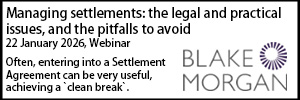Acas guidance warns against routine use of non-disclosure agreements
- Details
Non-disclosure agreements should not be used routinely or to prevent someone from reporting sexual harassment, discrimination or whistleblowing at work, Acas has said in new guidance.
The guidance is intended to help employers and workers understand what NDAs are and how to prevent their misuse.
Acas said NDAs “should not be used to hide a problem or brush it under the carpet”. It added that if an employer still wished to use an NDA then Acas advice was that employers should:
- always give a clear explanation of why one is being proposed and what it is intending to achieve;
- ensure that a worker is given reasonable time to carefully consider it as they may wish to seek trade union or legal advice on its implications;
- think about whether it is better to address an issue head on rather than try to cover it up; and
- never use NDAs routinely.
Acas said: “These types of agreements should be written in clear, plain English, that is simple to understand and leaves no room for ambiguity. Managers who are involved with these types of agreements should be well trained in using them and businesses should have a clear and consistent policy around them that are regularly reviewed and reported on.
“A worker should be able to ask questions and seek advice before agreeing an NDA. A staff member can also seek advice if they have concerns over an NDA that they have already signed. Sources of available help include legal representatives, trade union representatives, the police and healthcare professionals.”
Acas chief executive Susan Clews said: “The news has reported on victims coming forward that have alleged appalling abuse by high profile figures who have then tried to use NDAs to silence whistleblowers.
“NDAs can be used legitimately in some situations but they should not be used routinely or to prevent someone from reporting sexual harassment, discrimination or whistleblowing at work.
“Our new advice can help employers and their staff understand what NDAs are, how to prevent their misuse and examples where they will not be needed.”
The guidance can be found here.











